Gwanghallu Pavilion (광한루)
17522 2024-04-07
1447, Yocheon-ro, Namwon-si, Jeonbuk-do
+82-63-620-6172
Rebuilt in 1638 (the 16th year of King Injo), Gwanghallu Pavilion is one of the Joseon dynasty’s most exemplary structures. The pavilion was constructed in 1419 by Hwang Hui, a noted prime minister in the early Joseon dynasty, during his exile to Namwon. The name of the pavilion at that time was Gwangtongnu. In 1434, while the pavilion was undergoing reconstruction, scholar and politician Jeong In-ji called it Gwanghallu after Gwanghancheongheobu, the mythical palace on the moon. Designated as Treasure No. 281, the pavilion is one of four major pavilions known for excellent craftsmanship, along with Yeongnamnu Pavilion (Miryang), Chokseongnu Pavilion (Jinju), and Bubyeoknu (Pyeongyang). Gwanghalluwon Garden, which consists of Gwanghallu Pavilion, a pond, Bangjangjeon Pavilion, and Yeongjugak Pavilion form Historic Site No. 33.
Imsil Cheese Village (전북 임실치즈마을)
18764 2024-04-07
4, Cheese maeul 1-gil, Imsil-eup, Imsil-gun, Jeonbuk-do
Imsil Cheese, perhaps the most famous cheese in Korea, all started in 1960 with two goats. Having expanded greatly, visitors can get first-hand experience at making cheese as well as enjoy cooking with the freshest cheese available. The factory also provides cheese and yogurt at low-rate prices.
Deogyusan Resort (무주덕유산리조트(구, 부영덕유산리조트))
32369 2024-04-07
185, Manseon-ro, Seolcheon-myeon, Muju-gun, Jeonbuk-do
+82-63-322-9000
Deogyusan Resort (former Muju Resort) is located in Mt. Deogyusan, and is a representative mountain resort. It blends in beautifully with the scenery of Mt. Deogyusan National Park, and is the perfect place to enjoy winter sports.
Deogyusan Resort is great place to relax all year round, with Alps-style first class hotel and a variety of convenience facilities in its 2,200,000 pyeong area. The resort is especially famous for its ski courses, and many enthusiasts come here during the winter. At Manseonbong Peak (1,215m) skiing grounds, there is a lift that can handle 13,000 people at once, and there are a variety of courses from beginners' to professional levels.
Seolcheon Peak (1,520m) skiing ground where Asian Universiade competition officially opened, has a variety of gondolas and lifts, along
with a hot spring to relax after skiing. The outdoor hot springs with snow-covered mountains is especially famous.
In addition to the aforementioned facilities, you can enjoy tennis, mountain climbing, MTB, and horse riding, and at the theme-based shopping mall, Carnival Street, there are interesting products to see and food to enjoy. You can buy famous brand products from all over the world here cheaply, so look around.
House of Lee Young-choon (이영춘가옥)
28660 2024-04-07
7, Donggaejeong-gil, Gunsan-si, Jeonbuk-do
+82-63-454-3922
The House of Lee Young-choon was constructed by
a Japanese landlord named Kumamoto during the Japanese colonial era. The house combined Western, Korean, and Japanese into one structure. After Korean liberation, Dr. Lee Young-choon, the first medical doctor, lived in the house. From that time, the house was referred to as the
House of Lee Young-choon.
Thanks to its beautiful exterior, the house was used as a backdrop for films such as Bingjeom, Sandglass, and Yain Shidae, etc.
The doctor was considered the Korean "Albert Schweitzer", and his
pen name of "Ho", referring to ssangcheon,
means "two branches of spring water, represents one for healing physical disease and the other for healing the
spirit. He was born in Yonggang-gun, Pyeongannam-do in October 1903. In 1935,
through a connection by his professor at Pyeongyanggobo School, he took a position
as the head of Jahye Hospital to take care of 20,000 people. In addition, he was the first person
in Korea to implement the policy of school nurses as well as the medical insurance union.
Jaman Mural Village (자만벽화마을)
1664 2024-04-07
1-10, Jamandong 1-gil, Wansan-gu, Jeonju-si, Jeonbuk-do
Jaman Mural Village is located in the ridge between Omokdae and Imokdae along the foot of Seungamsan Mountain’s Jungbawi Rock. Jeonju Hanok Village is also visible from the wide street. Although it is a fairly steep walk up to Jaman Village, visitors will be able to enjoy colorful murals painted on the buildings and walls along the way.
Baraebong Peak (바래봉)
34639 2024-04-07
196, Baraebong-gil, Namwon-si, Jeonbuk-do
+82-63-630-8900
Baraebong Peak gets its name from its resemblance to an upside down barittae (a wooden rice bowl used by temple priests). The mountain is characterized by round slopes and fields of royal azalea flowers in spring. Trekking starts at Yongsan Village, 1.5 kilometers away from Unbong-eup. The trail follows a gentle path through a forest reserve behind a ranch and up to the peak. The last section of the trail before reaching the summit is covered in royal azaleas in full bloom from late April until May. The view from the peak includes the whole vista of Jirisan Mountain.
Gucheondonggyegok Valley (구천동계곡)
15814 2024-04-07
159, Gucheondong 1-ro, Muju-gun, Jeonbuk-do
+82-63-322-3174
Gucheondonggyegok Valley is located within Deogyusan National Park approximately 25 kilometers from Rajetongmun Gate, the entrance of the valley. The valley is famous for its 33 scenic points including Sushimdae Cliff, Gucheonpokpo Falls and Yeonhwapokpo Falls. The valley is popular all year round with cool shade in summer, fall foliage in fall and a snowy landscape in winter.
Wido Island Chidori Village (위도 치도리마을)
5181 2024-04-07
Nalmatong-gil, Buan-gun, Jeonbuk-do
Located on Wido Island, Chidori Village is a small fishing community. Looking out to the sea from this scenic, peaceful village, one can view picturesque Ttanchido and Jageunttanchido Islands. When the tide recedes twice every day, a path opens up to connect Chidori Village to these islands. Along this path, oysters can be found in great abundance, and visitors are welcome to dig for them.
Eunpa Lake Park (Eunpa Recreation Area) (은파호수공원(은파국민관광지))
32949 2024-04-07
Miryong-dong, Gunsan-si, Jeonbuk-do
+82-63-454-4896
Located in Gunsan, Jeollabuk-do, Eunpa Lake Park was once a reservoir built before the Joseon dynasty that supplied water to nearby farms. The lake and its surrounding mountains were designated a national tourist site in 1985, but remain historically significant as they are featured on Daedongyeojido (Grand Map of Korea), a revered document developed by geographer Kim Jeong-ho. Known for its beauty at night, the lake was befittingly dubbed “Eunpa,” which means “silvery moonlit waves.”
Eupa Lake Park is full of natural beauty. The road that runs up from the park entrance is lined with cherry trees that create a breathtaking tunnel of pink flowers each spring. This stunning cherry blossom tunnel draws crowds of families and couples each year, particularly on the weekends. Mulbit Bridge, a landmark of the Eunpa tourist site, offers an impressive view of the Music Fountain and nightscape. At the park, you’ll also find an inline skating area, a waterfront stage, and a lotus flower garden.
Muju Gucheong-dong Special Tourist Zone (무주구천동관광특구)
19625 2024-04-07
Seolcheon-myeon, Muju-gun, Jeonbuk-do
+82-63-320-2114
At the heart of the Muju Gucheondong Special Tourist Zone is Muju Gucheondong Valley. The outer parts of Deogyusan National Park and the mountain’s natural recreation forest are also part of the special tourist zone.
The 30-kilometer-long Muju Gucheondong Valley is located to the north of Deogyusan National Park. The calm and soothing sound of the water flowing through a lush forest make this a great summer destination. The 33 scenic points of Gucheondong include Eunguam Rock, Haksodae Falls, Waryongdam Pond, Gucheon Waterfall and Yeonhwa Waterfall. In the summer, visitors can see the
rare sight of fireflies in their natural habitat. The fall foliage in autumn and the winter snowscape are also quite exquisite.
Within the vicinity of Muju Gucheondong is Muju Resort. The resort complex is made up of a family hotel, resort condominium and various recreational facilities where visitors can enjoy skiing, hiking, horseback riding and mountain biking. Visitors can take the gondola from the resort all the way up to Deogyusan Mountain’s Seolcheonbong Peak (1,520 meters). From, there, they can easily reach the summit at Hyangjeokbong Peak (1,614 meters).
Taekwondowon, located near the Muju Gucheondong Special Tourist Zone, offers a hands-on Taekwondo experience program. Those who are interested in learning Taekwondo can take part in a 1-day program which includes a Taekwondo demonstration, a Taekwondo class (basic movements), and board breaking.
[Muju Gucheondong Special Tourist Zone]
Areas Covered: Mupung-myeon (Samgoe-ri) and Seolcheon-myeon (Samgong-ri and Simgok-ri) in Muju-gun, Jeollabuk-do
Area size: 7,610,000 ㎡
Tourist Attractions: Deogyusan National Park, 33 Scenic Views of Muju, Gucheondong Valley, Muju Resort, forest park, Taekwondowon, Muju Hyanggyo (Confucian school), Baengnyeonsa Temple, Jeoksansanseong Fortress, etc.
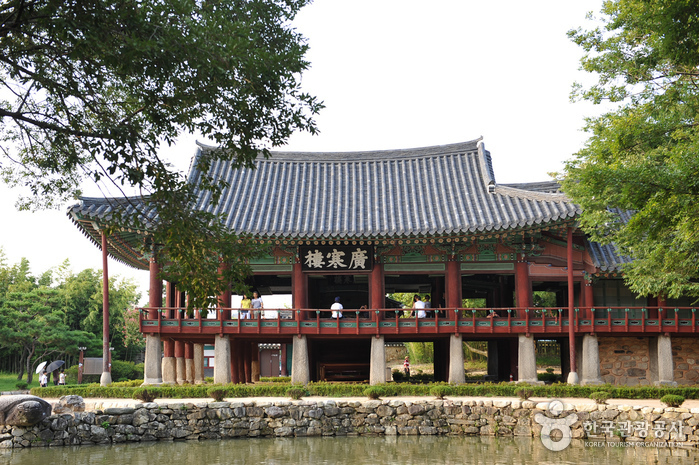

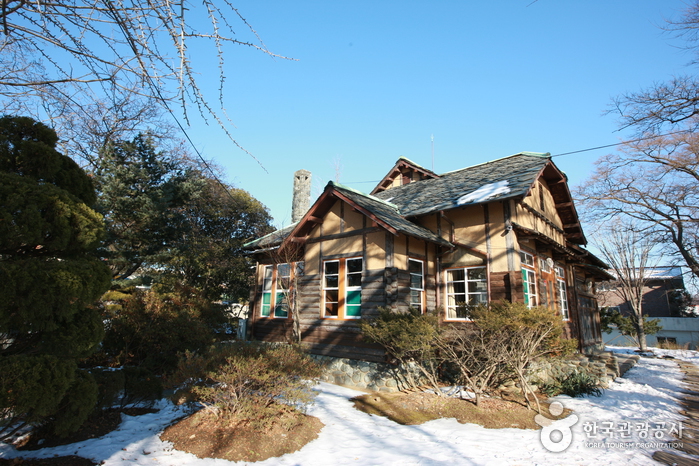
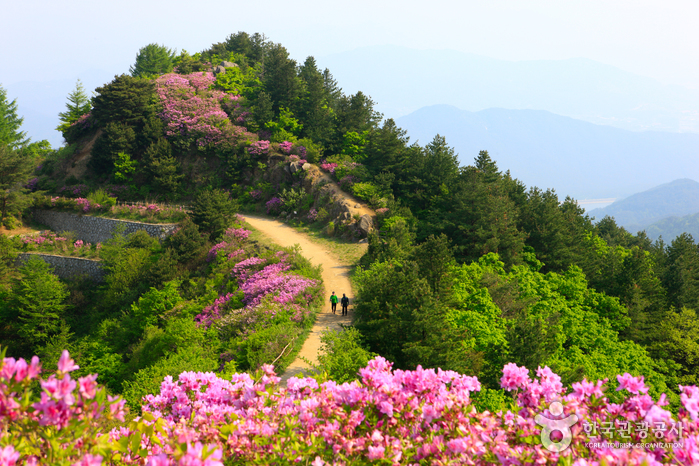
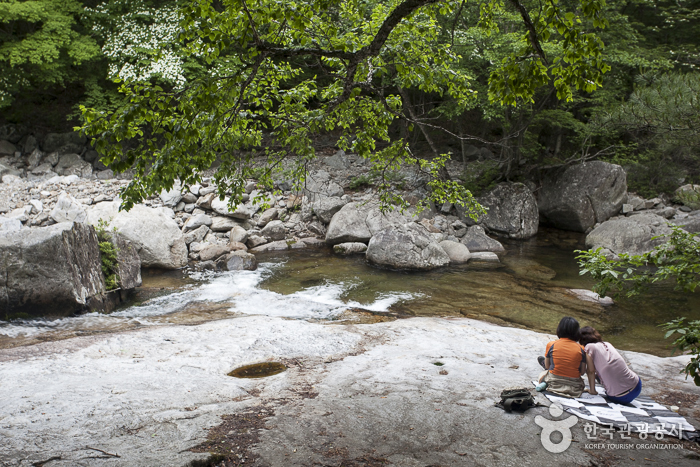
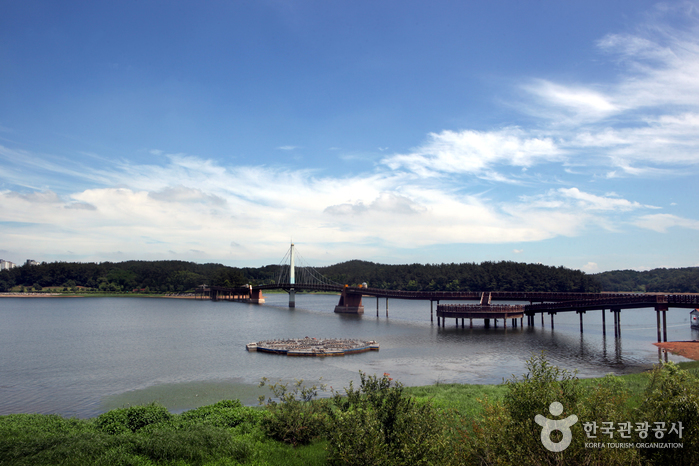
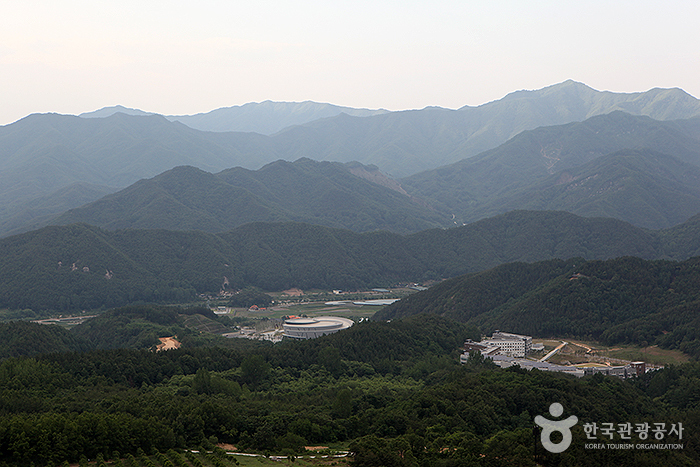
 English
English
 한국어
한국어 日本語
日本語 中文(简体)
中文(简体) Deutsch
Deutsch Français
Français Español
Español Русский
Русский